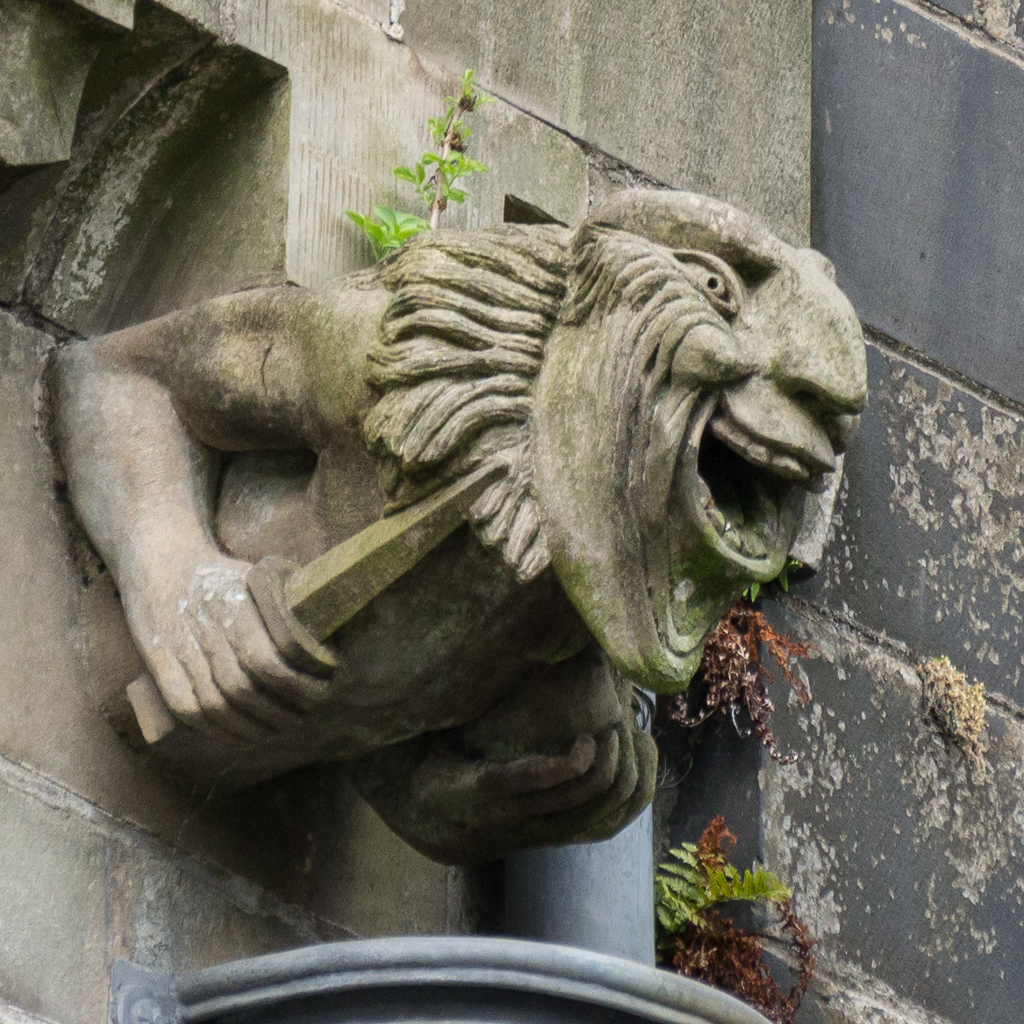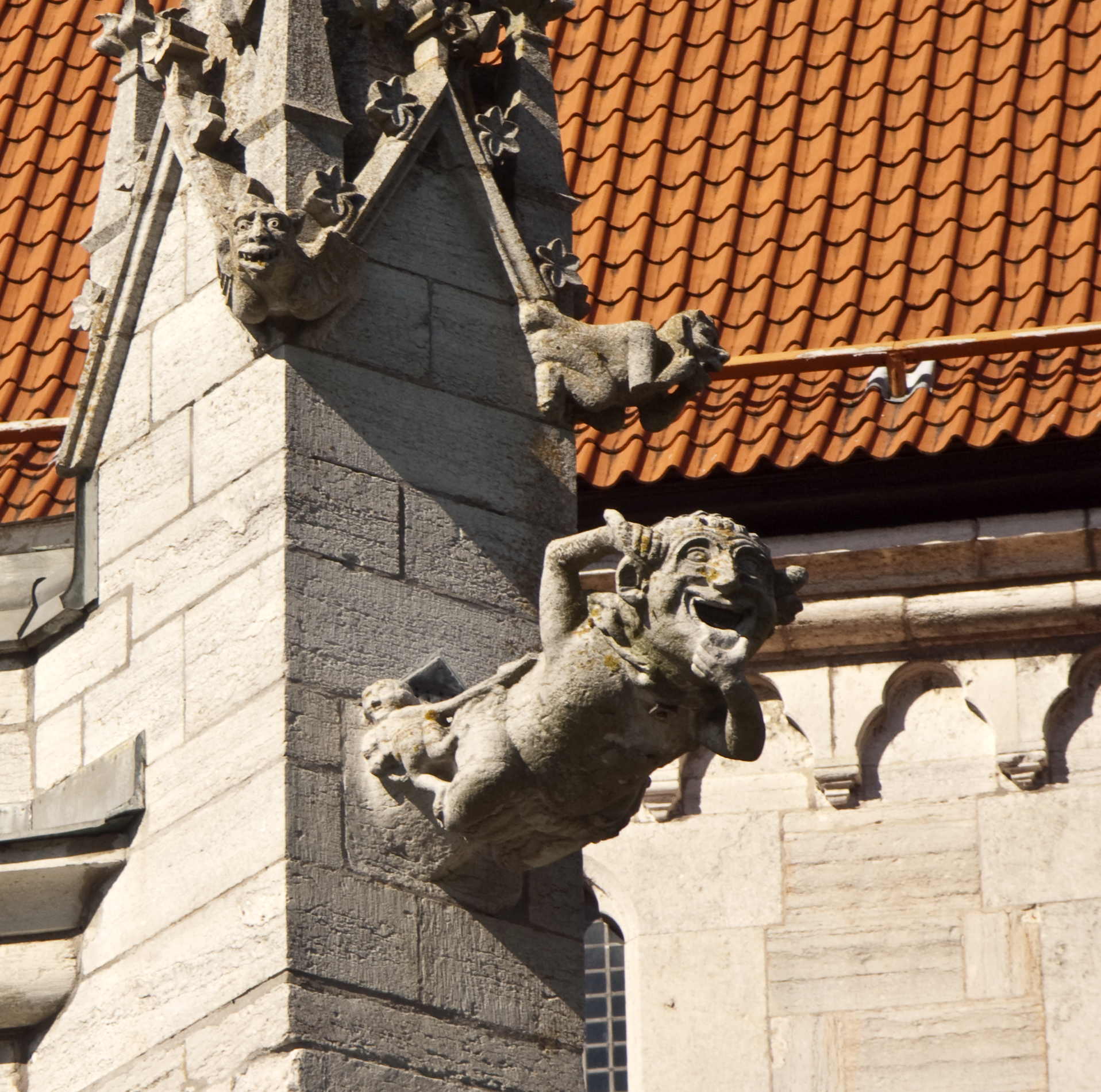
I recently finished reading Thomas Cahill’s How the Irish Saved Civilization, The Untold Story of Ireland’s Heroic Role from the Fall of Rome to the Rise of Medieval Europe. My prior training in medieval art history had addressed the importance of the medieval Irish and Scottish monastic establishment on Western European cultural history, so the main ideas of the book were not completely new to me, but it was great to have the entire narrative, rather than just the artistic portion, explained chronologically and in detail. I also really enjoyed the chapters about pre-Christian Celtic literature and society, about which I previously knew very little.
However, there was one thing in the book that really surprised me, and it had nothing to do with the highlights or low lights of Irish culture and influence. Instead, it was one short passage in the middle of a discussion about the ancient Celtic pantheon. — “But after Patrick the eviler gods shrank in statue and became much less troublesome, became in fact the comical gargoyles of medieval imagination, peering fearfully from undignified nooks” (Cahill 149). What??!! This is not the first I have heard it suggested that medieval gargoyles were in some way representative of the gods and mythological creatures of old, but it is absolutely the first time I have seen it put in such an unusual context.

Going back through a few of my favorite sources of information about gargoyles, I found many references to potential connections between gargoyles and pagan gods. All spoke to a sort of continuity between pagan and Christian traditions, or “survivals of pagan beliefs the Church permitted to persist beside Christian subjects, incorporated into church decoration for superstitious reasons” (Benton 23). According to scholar Janetta Rebold Benton, “Tolerance of such pre-Christian structures and customs was permitted, and their perpetuation in modified form was accepted by the Church because of their value as aids in religious conversion” (Benton 23). If I understand Benton’s argument correctly, it is predicated on the assumption that the ancient Celts and others who converted to Christianity had a certain level of attachment to the old pantheon and thus derived some level of reassurance from the inclusion of a few old beliefs with the new. The majority of other theories I am familiar with concerning elements of local tradition being absorbed into Christian practice (through gargoyles or otherwise) have seemed to imply a similar belief that new converts were still loyal enough to the old traditions that their presence in the new religion would be seen as a good thing. This could not possibly be further from Cahill’s position not only on gargoyles, but also on the Celts’ feelings about their old gods in general.

In Cahill’s view, the ancient Celts’ relationship to their traditional gods was one characterized primarily by a kind of primal fear. “It would be understatement to assert that the Irish gods were not the friendliest of figures. Actually, there are few idols that we have retrieved from barrow or bog that would not give a child nightmares and an adult the willies” (Cahill 126). Cahill sees this relationship dynamic as the probable explanation not only for the success of early Christian conversion efforts like those by Saint Patrick, but also for the widespread practice of human sacrifice in pre-Christian Ireland. “If we study the faces of the Celtic gods, we can have no doubt that only blood could satisfy most of them” (Cahill 126-137).
In light of Cahill’s characterization of the ancient Celts’ fear, or at least strong apprehension, of their traditional pantheon, his statements about gargoyles can be understood as comparable to someone today deriving a sense of relief from seeing an infamous criminal in handcuffs. This idea does have some close cousins discussed in Benton and folklore scholar Gary R. Varner’s books, most involving the reading of gargoyles as dragons, demons, devils, or sinners brought to justice by God and bound to the church. It also has much in common with an old French legend involving a fearsome dragon named La Gargouille, who was slain by a missionary priest and mounted on the exterior of Rouen Cathedral, becoming the first gargoyle (Benton 11-12). In that story, as in Cahill’s interpretation, something once widely feared is first overpowered and then displayed on the church in its diminished form to show the masses that they need not be afraid of it any longer.

But why would have it been considered important to show the recently-converted Celts these images of a vanquished old pantheon? Whether you take the view that such appearances were meant to be reassuring (the old monsters can’t hurt you any more) or dominating (your new God conquered your old gods, and don’t you forget it), why bring them up at all? Wasn’t the whole idea of conversion supposed to be that no one was meant to believe in the old gods anymore? Not necessarily, and particularly not in the Celtic world, where medieval gargoyles originated. As Cahill tells us “the Irish never troubled themselves overmuch about eradicating pagan influences, which they tended to wink at and enjoy” (Cahill 148-149). Cahill’s book speaks frequently about the ways in which pagan tradition survived in later Christian culture, as do Benton and Varner’s books. Too much engagement with pagan tradition was not yet seriously taboo. In medieval Ireland, I guess not too many people would have had a problem with pagan gods appearing on the outside of a church, particularly when most people in any position to complain had themselves worshiped those gods not too long before. In fact, the stories and ideas of the old religions, in addition to their images, were sometimes woven into Christian teachings to facilitate conversion. Quoting nineteenth-century scholar E.P. Evans, Varner tells us “Gentile converts were also told that the pagan religions were not merely old wives’ fables, but had a certain heavenly origin and historical justification as preparatory to Christianity, which they foreshadowed” (Varner 11, quoting Evans 18).
Cahill’s theory is difficult to prove (as are most, where gargoyles are concerned), but it seems as solid as any other. It makes much more sense for the earliest churches, constructed around the time that many people were converting, than it does on later churches, when Christianity was well established in the area and most people were generations removed from pagan beliefs. However, styles and traditions are sometimes very slow to change, and this would not be the first or last known case of a feature’s original use or meaning becoming obsolete but its form continuing to appear purely for tradition’s sake.
Sources:
- Benton, Janetta Rebold. Holy Terrors: Gargoyles on Medieval Buildings. New York: Abbeville Publishing Group, 1997.
- Cahill, Thomas. How the Irish Saved Civilization, The Untold Story of Ireland’s Heroic Role from the Fall of Rome to the Rise of Medieval Europe. New York: Nan A. Talese, 1995.
- Evans, E.P. Animal Symbolism in Ecclesiastical Architecture. London: W. Heinemann, 1896.
- Varner, Gary R. Gargoyles, Grotesques & Green Men: Ancient Symbolism in European & American Architecture. USA: Lulu Press, 2008.

